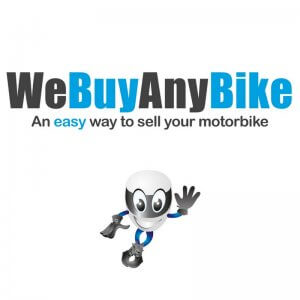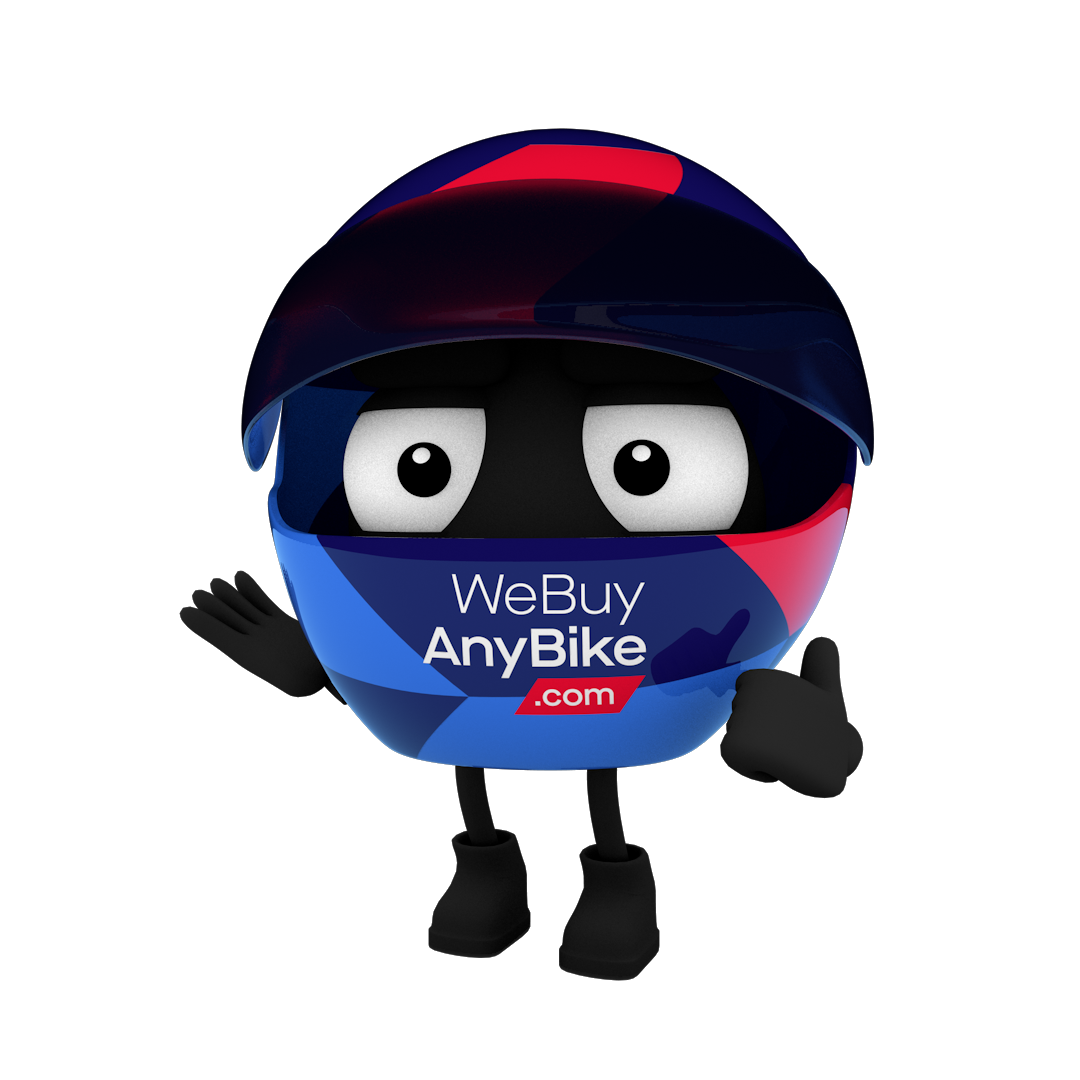10 Bikes To Ride Before You Hang Up Your Leathers
From sports bikes to tourers, cruisers to off-road, we love all kinds of bikes here at webuyanybike.com. There’s virtually no such thing as a bad bike these days, but every now and then a new legend comes along. So we’ve racked our brains to bring you our list of the 10 stand-outs you just have to ride at some stage in your biking career. We’re bringing you our first five (in alphabetical order, of course) today, so check back soon to discover our complete list of legends…
Aprilia RS250
Aprilia were so dominant in the 250 Grand Prix class that they effectively killed it. Between 1994 and the end of the class in 2009, Aprilia (along with the rebadged Gilera) won the title 10 times and were always the fastest bikes on the grid.
In 1994, the year of Max Biaggi’s first title for the tiny Italian company, Aprilia launched the RS250, an exquisite two-stroke that remains the closest thing to a mass produced Grand Prix bike. Powered by a tuned version of Suzuki’s RGV250 engine (itself an absolute gem of a bike) the RS250 weighed just 140kg and even today remains one of the most gorgeous and finest handling motorcycles out there.
The RS250 remained in production until 2004 but unmolested ones are hard to find now. Even an average one won’t be cheap to buy, and it certainly won’t be cheap to run. Fuel consumption is horrendous and it drinks premium two-stroke oil at an alarming rate. You can also expect to be replacing pistons almost as often as your knee sliders. Which is quite a lot…
Alternatives
Japanese 400cc fours like the Kawasaki ZXR400 and Honda NC30 sacrifice a little performance for improved durability but don’t forget that even the youngest bikes are going to be knocking on for 20 years old now. If the ultimate MotoGP replica is your thing, and you’ve just won the lottery, why not seek out Ducati’s limited run Desmosedici RR? Just 1500 200bhp replicas of Loris Capirossi’s race bike were made. Just don’t ask how much it’s going to cost…
BMW R1200GS
BMW introduced the GS moniker in 1980, GS standing for Gelände/Straße or off-road/street, and the legend was quickly established with numerous successes on the Paris Dakar rally.
Mainstream recognition came when the R1150GS took Ewan McGregor and his mate Charley all the way to Cape Town in Long Way Down and there is no doubt that the flat-twin is one of the very best long-distance bikes out there today.
The truth is that the GS is far too big and heavy to be a serious off-road weapon, but for adventurers who like to tackle the odd unsurfaced road, the GS remains a popular choice.
As a timeless classic, GSs hold their value well in the second-hand market, although buyers should be aware. The boxer engine and unique Telelever suspension give the GS a feel of its own (that’s not to all tastes) and the drivetrain is known to be a bit fragile, but give one a try and discover just why the ubiquitous is the world’s best selling big bike.
Alternatives
Shorties, or those looking for a pure road bike, are likely to find the RS and RT variants of BMW’s boxer better suited, while Triumph’s more road focussed Tiger 1050 is a better all-rounder in many ways but lacks the Beemer’s shaft drive and rugged image.
Ducati 916
We could write a book about why the 916 should be in every biker’s dream garage, but here are just two reasons:
- It’s the bike that brought world superbikes to public consciousness.
- It’s the most gorgeous thing. Ever.
Carl Fogarty won the superbike world title in 1994 on a 916, its debut year, and it went on to dominate the series with the 916 and the evolutionary 996 winnings a total of six world titles in eight years.
That’s what makes the 916 series so desirable. On the road, they are cripplingly uncomfortable and outgunned by Japanese rivals, but that’s not really the point. The combination of that 90 degrees V-Twin and trellis frame delivers a unique riding experience and the bark from the (then innovative) under seat exhausts is approaching spiritual. And did we mention the looks?
Alternatives: Honda’s RC45 and VTR1000 were the only bikes to topple the Ducati on the racetrack but can’t match the Italian for looks and soul. If budget is the problem, why not try Aprilia’s RSV1000 or the unloved Ducati 999, the bike that had the impossible task of replacing the 916.
Harley-Davidson
Nothing polarises motorcyclists (or should that be bikers?) like Harley-Davidson.
The American brand attracts the most loyal following in motorcycling, with many, if not most, owners buying into the whole Harley lifestyle.
But it’s not just bankers and lawyers who shed their suits to play at being badass bikers on a weekend. There are a whole host of riders out there who simply love their Harleys for what they are, and why not?
On paper, the American iron is slow and outdated. They handle poorly, shake to bits and are mostly impractical, but to criticise is to miss the point. Those 45-degree V-Twins have more character than anything else on the road and you can’t deny there’s something totally cool about that off-beat exhaust note.
Which one you buy is a matter of taste and budget. The entry-level Sportsters are as basic as basic can be, but fun and very customisable. For the classic Harley look, you can’t go far wrong with the iconic Fat Boy, while the more modern V-Rod provides a decent turn of performance.
Whichever Harley you buy, you’ll be pretty safe in the knowledge that resale values should remain strong. Yearly updates are usually very minor for Harley’s, so second-hand values are usually determined by condition and the desirability of the accessories fitted, with Screamin’ Eagle performance parts commanding the biggest premiums.
Alternatives: There are a host of Harley clones out there, but remember that there ain’t no alternative to a Harley, boy!
Honda VFR800 Bikes
Honda’s flagship V4 concept was rubbished when it was introduced in the early 80s, with the complex VF750 proving horrendously unreliable.
Undeterred, Honda persevered and introduced the first VFR750F in 1986 to much acclaim. Although not as sporty as bikes like the Suzuki GSX-R750 and Yamaha FZ750, Honda practically invented a new genre in the sport-tourer. Comfy enough to ride across Europe or use on the daily commute but sporty enough to be successful at the TT, the VFR’s great strength was its ability to be all things to all men and to deliver it with legendary Honda reliability.
Honda gave the bike a major overhaul in 1990, with an all-new frame featuring the Elf single-sided rear swingarm and in 1998 the capacity grew to 782cc to create the fifth-generation VFR, the VFR800.
This is the bike we think you should ride, offering an excellent blend of (non-race replica) sports bikes with everyday usability. Later bikes adopted Honda’s car-derived VTEC variable valve timing system, but these models weren’t everyone’s cup of tea, being heavier, more complex and less practical due to the adoption of the under-seat exhaust.
Today, the VFR800 is a bike that’s out of fashion but, despite this, it’s still a great bike that’s capable of racking up huge mileages and holds its value well in the marketplace.
Alternatives: Triumph’s 955cc Sprint ST was the main competitor/copy and in many ways a more soulful and sporting ride. Nowadays the market for all-rounders tends towards the adventure bike sector, with the BMW R1150GS the pick of the class. For those on a budget, something like the Yamaha Fazer 1000 offers lots of thrills and all-around capability for not much cash.
Suzuki DR350 Bikes
Forget about the current crop of GS-inspired ‘all-rounders, if you want a road bike with real off-road ability, you’ll be needing a simple little bike like the Suzuki DR350.
Introduced in 1990, it remained part of Suzuki’s range for over 10 years, when it was replaced by the more modern DR-Z400. On paper, it’s not much to write home about, and on the road, it ain’t going to excite much either, but that’s really not the point.
If a GS is one of those massively expensive 4x4s then the DR350 is the two-wheeled equivalent of a Toyota Hi-Lux: strong, reliable and go anywhere, yet light, cheap and easy to repair when need be.
This is motorcycling at its purest. A 33bhp bike that gives you the freedom to go where you want to go, without the worry that falling off will require an army of blokes to pick it up or a second mortgage to repair the damage.
Let’s be honest, every rider should have a dirt bike at least once in their life.
Alternatives: Yamaha’s XT500 was the first Dakar winner and is now commanding big prices on the classic market or, for a more off-road focused tool, why not try the Honda XR250?


Helmut
22 May 2013
For any blog enquiries, please emailmarketing@webuyanybike.comView all posts by Helmut
